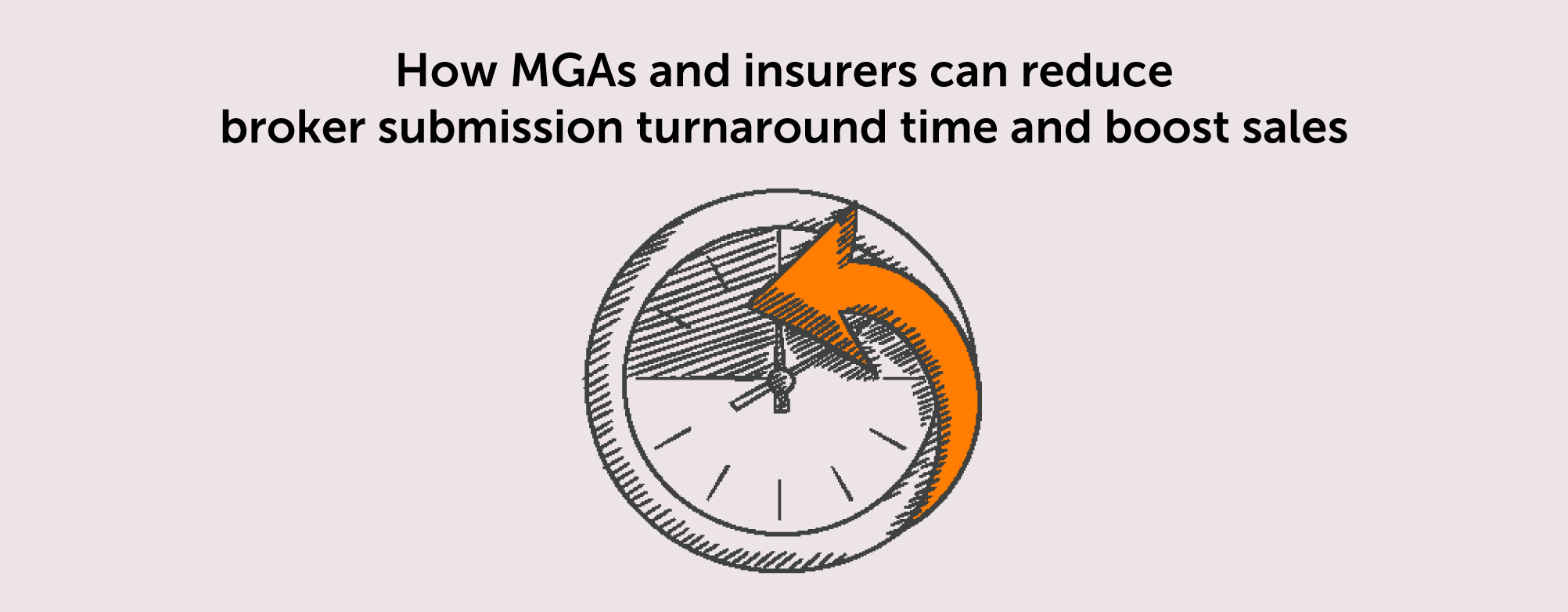Brokers are the lifeblood of the insurance industry, and a vital partner to MGAs and insurers, with figures showing they arrange 77% of general insurance and 94% of commercial insurance in the UK. And despite the rise of online and D2C sales, the influence of brokers doesn’t look set to wain any time soon, with an average of 9% annual growth expected in the market between now and 2030.
With so much business placed through the broker channel, it is critical for MGAs and insurers to have an efficient process for working with their partners, to ensure quotes are turned around quickly and accurately. But, in practice, this isn’t always possible, with several common bottlenecks regularly holding things up.
What are the biggest bottlenecks in the broker submission process?
Lack of consistency across application processes and forms: To provide clients with the best quote, brokers must reach out to numerous insurers and MGAs, each with distinct application requirements and forms. This requires brokers to replicate the same process numerous times, causing delays and sucking up team resources.
Broker submissions in incompatible formats: A knock-on effect of the above is that many brokers choose to submit risk details in the formats most convenient for them, spanning PDFs, Word, Excel, or email. This eases the process on their side but shifts the workload to the underwriter, who must extract and process the data before it can be assessed. Insly’s analysis found that underwriting teams only handle around 30% to 50% of broker submissions due to this challenge, leading to a substantial loss of potential sales.
Broker submission triage: Another bottleneck is the triage process, during which underwriters must sift through broker submissions to categorise and prioritise based on complexity, request type, and other criteria, before sending them to the appropriate underwriter to quote. This is a time-consuming process which takes underwriters away from potentially higher value work.
Responding to broker queries: Inefficiencies and delays can also result from back-and-forth communications between underwriters and brokers regarding risk and customer details, how they work, or what they cover. Again, this consumes valuable time for both underwriters and brokers, which could be spent on more business-critical activities.
What is the business impact of broker submission delays?
The overall business impact of these bottlenecks can be considerable due to time wasted by brokers and underwriters manually rekeying data and sifting through poorly structured information, meaning quotes take longer to process. This impacts customer satisfaction and experience while increasing the chance of human error and making it harder for underwriters to write the most accurate quotes. Unnecessary admin also reduces the time underwriters can spend on harder-to-place, more complex business, and building new products, ultimately impacting long-term growth.
How can MGAs and insurers reduce broker submission time?
For many years, these inefficient processes have been seen as part and parcel of how brokers and underwriters transact. But with new technologies and solutions, they’re no longer an inevitable part of doing business. Here are some tools that MGAs, brokers, and insurers can use to reduce broker submission turnaround time.
AI-powered broker submission solutions: Thanks to advances in AI, there are now tools, such as Insly’s FormFlow that will automatically capture data submitted by brokers in any language and format, including PDFs, images, emails, or even handwritten text, so it can be processed by quote and bind systems. This eliminates the need for MGAs and insurers to re-key data, while FormFlow can also augment customer information with third-party data from public databases, easing the underwriting process and reducing administration further.
Automatic submission triage: Underwriters can now delegate much of the triage process to AI, freeing them to focus on the most important requests. AI tools are now capable of reviewing broker submissions to sort them into segments, prioritise based on company underwriting strategy, and the likelihood that the risk will be placed. These tools can also identify the simplest submissions, to be pushed through for automated underwriting, meaning even less input from the team, and even faster responses back to customers.
Broker portals reduce back-and-forth: Broker portals are another vital tool for MGAs and insurers, providing a dedicated space where they can request quotes, make policy changes, request renewals, and view policy and customer databases. This further minimises broker submission admin while enabling brokers to easily find answers they’re looking for, without overloading inboxes.
The broker-underwriter relationship goes back centuries and is still going strong. But, with numerous inefficient, outdated systems and processes, it is in desperate need of a shake-up. Tools like FormFlow are revolutionising broker submission turnaround times while reducing frustration and repetitive tasks on both sides – helping to ensure the broker-underwriter relationship remains rewarding and productive for many years to come.
For more information on Insly’s FormFlow tool, get in touch to book a demo, or to find out more.



